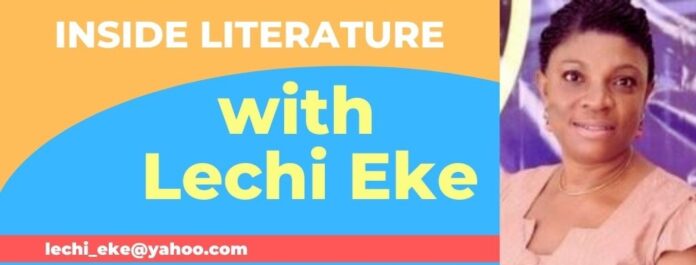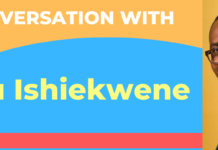Origin, development and genres of fiction, assist readers in choices of what they want to read
Many avid readers of imaginative literature (this completely excludes non-fiction Literature) do not know how fortunate they are to have choices of what they want to read today. Some thousands of years ago, there were few choices, and if one backs up a little, there were no choices at all.
In the beginning, there were no novels, no printed poems, drama, or short stories. However, there have always been stories, told by words of mouth. This is called oral tradition. But no one knows how narratives or imaginative stories began. Was it from someone telling someone about a dream he/she had? Or was it from sharing a thought, an imagination? Or relaying to another an event witnessed? Or, could it be that the elders began cooking up stories to frighten and make the young ones behave well? It is unfortunate that no one can tell us.
Long time ago, historians put it as early as the third millennium BCE, or thereabout, the ancient Sumerian scribes (Mesopotamia) went beyond marking symbols on cuneiforms and started copying down real writings like essays, hymns, poetry and myths. The two most outstanding are: Instructions of Shuruppak (2500 BCE) and Kesh Temple Hymn.
In the former, the Sumerian king named Shuruppak laid down some sagely proverbs/advice for his son, Ziusudra, admonishing him amongst many other things, “Not to pass judgement when drunk” and that “a loving heart maintains a family while a hateful heart destroys it.”
While these two may represent the world’s earliest Literature (non-fiction), the earliest imaginative literature in the world is The Epic of Gilgamesh, made up of poems and tales.
READ ALSO:
Setting, Structure and Meaning in Jude Idada’s award-winning Boom Boom
It’s recorded that this mythic imaginative work first appeared around the third millennium and tells the story of a part man, part god-ruler named Gilgamesh who traverses the then known world searching for the key to immortality. His quest brings him in contact with gods while he exterminates monsters in his way; all ending in tragedy.
However, the oldest representation of storytelling known to mankind today is the 36, 000 years old Chauvet Cave paintings in France that tell the story of volcanic eruptions. Perhaps better known are fourth century pictorials or visuals of Egyptian hieroglyphics which show us some ancient Egyptian activities in pictorial forms.
Some schools of thought believe that these forms of storytelling were used in ancient times because language had not developed, but I disagree. I believe that language is as old as man. I will cite the Bible as the book with the oldest story in the world, the story of creation. In it, the first woman (Eve) has real conversation with a serpent, or “the serpent”, as Christians believe that it is Satan himself. Then, there is the conversation of Eve with her natural husband, Adam, after her conversation with the serpent. Therefore, I believe that language is as old as man.
So, from the age of signs and symbolic drawings in storytelling, we arrive at the first recorded stories. Under this, we have the Epic of Gilgamesh and others. Then in the 6th century BC, the world received the Greek slave fabulist, Aesop’s 725 Fables which include: The Tortoise and the Hare; The Swallow and the Crow.
With the advent of the printing press, the collection of Aesop Fables was published in 1461 in Germany and 1481 in English by William Caxton. Going down to the 8th century BCE, we have Homer’s Iliad with focus on the last 52 days of the 10 years old Trojan War.
From the Bible, we glean an insight on how these stories came to be. Yahweh instructs the Israelites on what to do with events that occurred. He instructs them to share their stories with their offspring who will also share them with their offspring. But as development continued, later in the same Bible, he tells the ancient prophet Habakkuk, to “write the vision and make it plain.” So, ancient Greek slave fabulist, Aesop, was said to be a travelling storyteller. Although his themes are didactic, they were firstly for entertainment.
Now, looking at both the pictorials and the recorded stories, they seem to depict either real life events or stories of small ‘g’ gods, royals, nobles and heroic figures. However, as centuries rolled by, distinguished storytellers began to emerge. They gradually turned away from myths, fables and fairy tales and turned storytelling into an art with identifiable human characters.
From the first century AD, during the time of Jesus Christ, we find in the books called the gospels, the oral parables told by Jesus Christ Himself. These parables are imaginative, or fabricated stories. Their aims were never to entertain, but to teach and to expose humanity’s complex nature including motivations, choices and disposition.
So, the genesis of fiction is ancient myths, folktales, fables, and later parables. They are quite engaging; mostly epics of heroic figures and gods.
It was not until the late 12th century that a few notable writers like the England resident and French native, Marie de France, wrote something worthy of being described as “fine art”. As the years flew by, other writers like Giovanni Boccaccio (Italian, 1313-1375); Geoffrey Chaucer (English, 1340-1440); William Shakespeare (English, 1564-1616); Christopher Marlowe (English, 1564-1593) Ben Jonson (English, 1572-1637) began to emerge.
It is worthy of note that the word fiction came into the English vocabulary in the year 1599. What we know as fiction today began to flourish in the late 17th century slash early 18th century with the advent of The Novel. The Duchess of Newcastle, Margaret Cavendish’s science fiction, The Blazing World, is one of the blazers of the trail in 1666 together with Julian of Norwich’s Revelation of Divine Love (inspirational fiction written in the 14th century and published in 1670) and Daniel Defoe’s Robinson Crusoe ((Adventure fiction) 1719) and Jonathan Swift’s Gulliver’s Travels ((Adventure fiction) 1726) amongst many others.
So, The Novel which evolves from ancient myths, fables, folktales and heroic stories gradually pursued and overtook other genres of literature in the preferences of readers when with the invention of the printing press in 1436, written matters became available to the world’s few literates.
Aims of the Novel
The focus of the novel is life and its activities. When we talk of aims, its major aim is entertainment. And in the second place of its aims is, to teach important lessons for different purposes like religious, political, economical, etc. A third aim is, to expose and explain human nature.
We all agree that human nature is quite complex. As we read about different characters and their choices and their actions and motivations, we begin to figure out how to deal with life and the complexities of those we come across.
The Novel as we know it today, is a powerful tool that transports the reader to places hitherto unknown, and may never be known experientially to the reader except through the pages of a novel.
Literature, especially, fiction, is an important tool in the acquisition of knowledge in dealing with human nature.
Writers have employed different points of view known as POV to expose human nature. Perhaps the most revealing of this feature or element is, the third person point of view (which has three variants: objective/dramatic (used in writing plays); limited omniscient in which we see things through the eyes and mind of the major character, and the omniscient which is like the-eye-of-God, all seeing-all knowing variant).
Today’s readers, as we said from the beginning, have scores of choices of different story forms to make.
Different Genres of Fiction
Adventure fiction
Children Literature Comedy
Contemporary fiction Crime fiction
Drama or Action fiction Epic poetry
Espionage Fable
Fairy tales Fantasy
Historical fiction Horror
Inspirational fiction literary fiction
Magical realism
Mystery fiction Romance novel
Satire Science fiction
Short story Space opera
Steam punk Western fiction
21st Century Literary Genres
Auto fictional Doodle fiction e.g., The Diary of a Wimpy Kid
Experimental Fiction Game-making
Hypertext Speculative fiction
This list presents us with quite a variety to choose from. So, read and expand the scope of your knowledge. You never can tell you may find solution to that knotty issue in a book; that business idea may be locked up in a book; that relationship problem, or the solution to your character flaw: all these may be solved on the pages of the books you read.
Above all, reading puts you above your peers (refines you) giving you an edge because a reader is a leader.
Give away
We have three (3) different novels to gift five people who will answer correctly the questions below. The novels are: Fine Boys by Eghosa Imasuen, The Fishermen by Chigozie Obioma and Segu by Maryse Conde. (For Nigerian cities only).
Winners have a choice of the particular novel they want.
- What’s the village setting of Anote Ajeluorou’s Igho Goes to Farm? And what’s the lesson of the story?
- In Jude Idada’s Boom Boom, who is “Unsmiling Face” and who farted twice at the gate in Ikoyi?
- What’s the initial setting (mood) of Akachi Ezeigbo’s My Cousin Sammy? And what pet name does Ene’s dad call her?
Send your answers to lechi_eke@yahoo.com with subject: Inside Literature.














